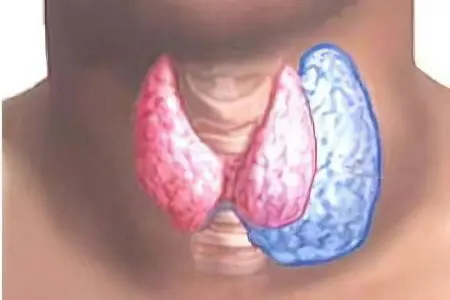Why is cystic goiter dangerous?
Cystic-degenerating goiter is a disease of the thyroid gland, which is characterized by the formation of cavities in its tissue filled with viscous contents. This pathology can affect both female and male faces, but women get sick several times more often.
Depending on the causes of development and the characteristics of morphological changes, several types of cystic goiter are distinguished:
True or simple cystic goiter – is a benign formation, the walls of which are lined with unchanged epithelium; by the nature of the content, serous and colloidal forms are distinguished (occurs in 3-5% of cases).
Cystadenoma is a cystic degeneration of the gland, in which benign nodes take on signs of malignancy, most often as a result of impaired blood supply. In the tissue of the organ, cavities are formed, lined with altered epithelium and filled with either blood or serous fluid (30% of the nodes degenerate into cystadenomas).
Cystic formations having a lateral or central location. They are usually hereditary.
Parathyroid cysts are cavity formations located on the surface of the glandular tissue.
Echinococcal cysts – caused by parasitism of echinococcus.
Cystic teratomas.

The last three pathologies of the thyroid gland are different in nature from the others, but they are often confused with cystic goiter.
Cystic dystrophy of the thyroid gland can be caused by hyperplasia of the thyroid follicles, congenital dystrophic processes, and small hemorrhages. In some cases, cysts grow very slowly, and sometimes they grow rapidly over several weeks.
Cystic degeneration of the thyroid gland is characterized by degeneration of its tissues and an uneven increase in size. Often, cystic cavities replace almost all of the normal glandular tissue. They compress blood vessels, nerve endings and normal tissue, which leads to an acceleration of degeneration processes. In cystic cavities, an excessive amount of hormones is produced, which can lead to the development of hyperthyroidism.
[Video] Endocrinologist, Ph.D. Struchkova Yu. V. – Cyst of the thyroid gland:









